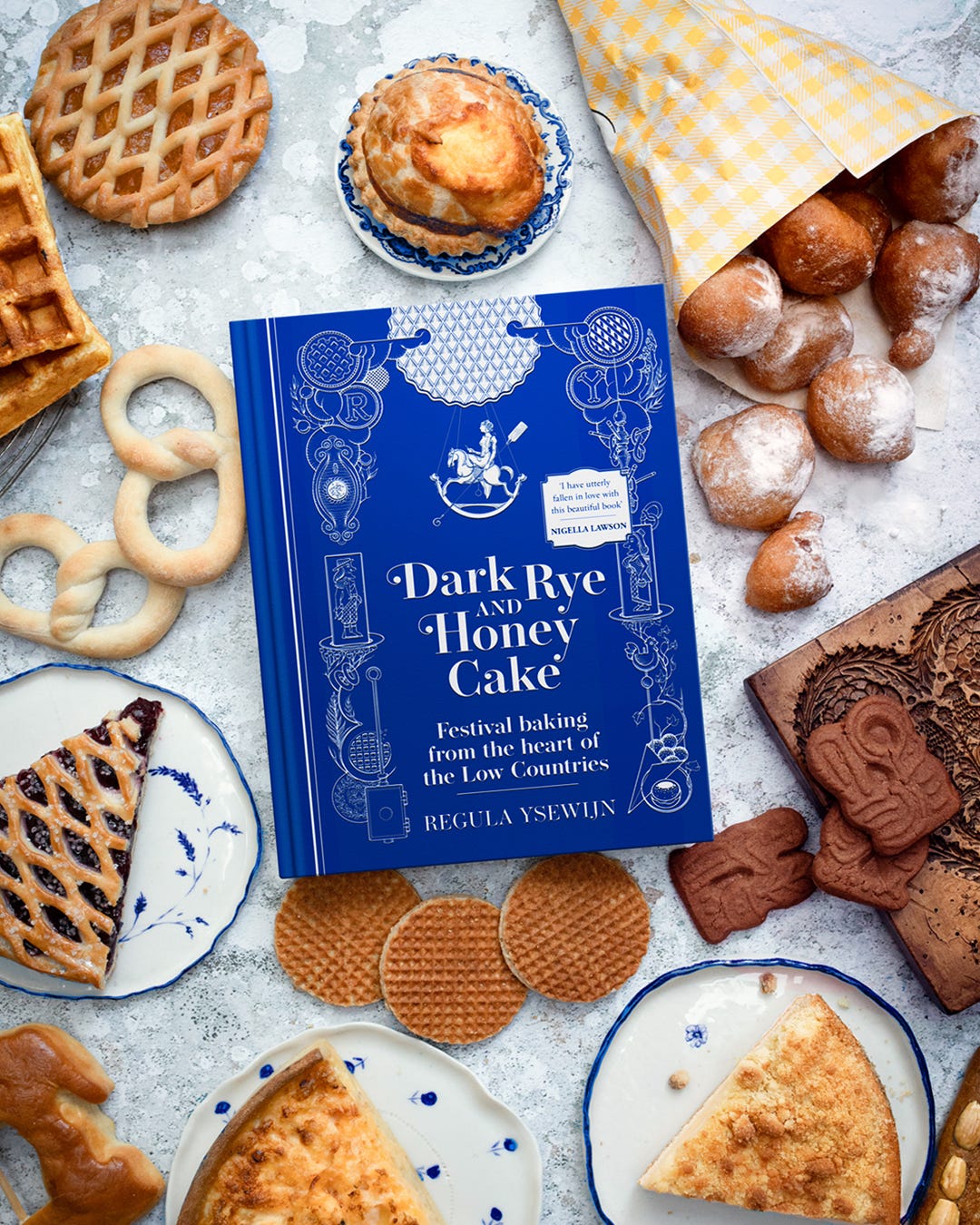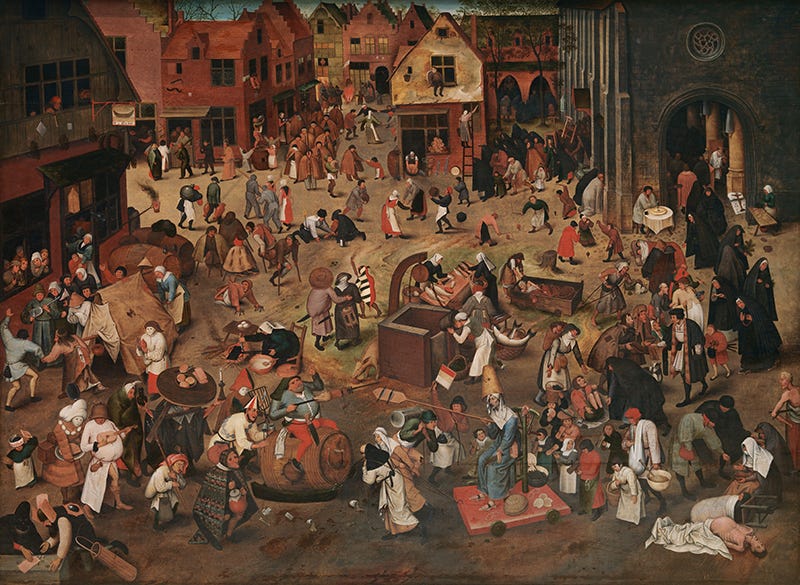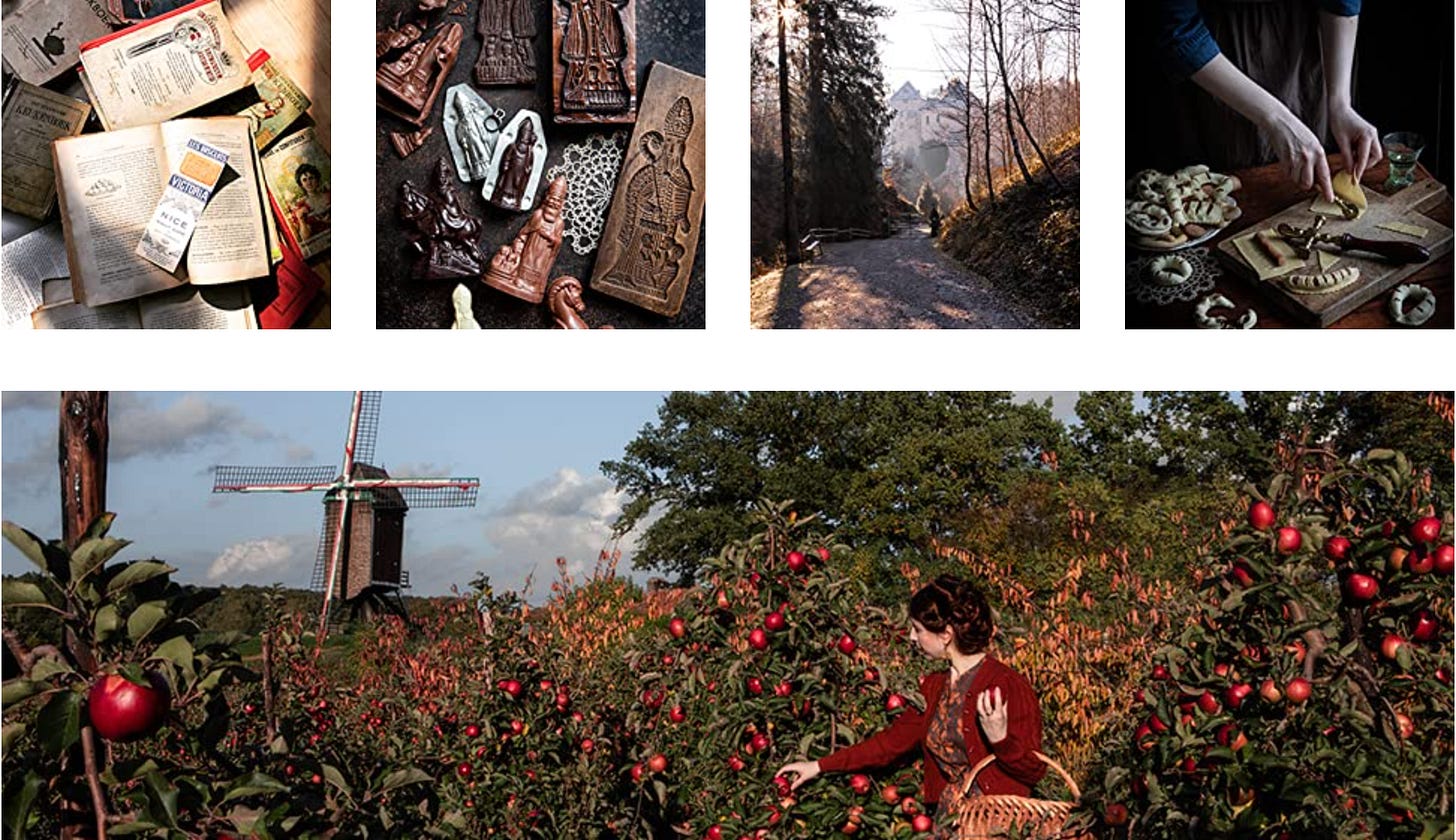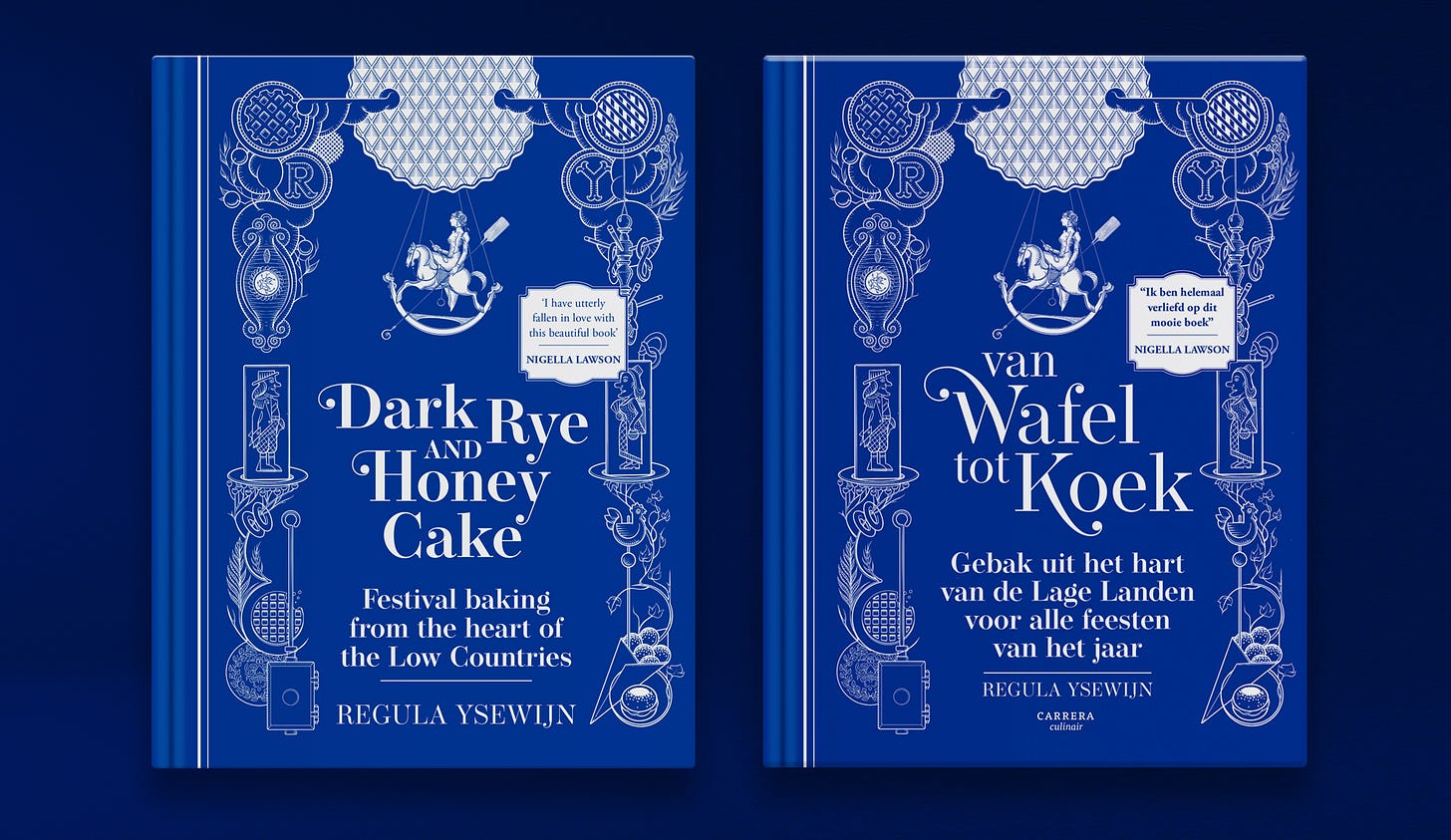Dark Rye and Honey cake - Festival baking from the heart of the Low Countries
This is the story of the book, what is it about, what can you expect...
Last week I posted about how my process is in creating a book, but the question came to talk about the book itself. It is maybe hard to believe if you see me post about my book on social media but I worry to talk about my own work too much. But as someone pointed out to me, they’d like to read my words about the book. Thank you for telling me this, that is what Substack is about, it’s not just me sending out newsletters into the void, it’s you receiving them and requesting things you’d love to know more about.
Dark rye and Honey cake, festival baking from the heart of the Low Countries, (Van Wafel tot Koek in Dutch), is a cookbook, history book and book of stories all in one. The story is told with the help of old cookery texts and 16th and 17th century art of the Low Countries where food often plays a central role. (Like this Brueghel painting ‘Fight between Carnival and Lent, showing the food typical of Carnival and Lent)
The evolution of material culture - for example waffle irons - tells us how our eating habits and how we eat and prepare food has changed through the centuries. Hence a essay on waffle irons and 14 waffle recipes.
Baking shows the heart of a food culture, for centuries now we have all cherished sweetness which has firmly left its mark on our memories and our customs which is why when traditions fade through time, the baking traditions are the last ones to be forgotten. But forgotten they can still be, and that is why I wanted to document these traditions. The recipes are linked to the traditional feasts of the year, from Carnival to Christmas, because sweet treats and fine festive breads were reserved only for special occasions. Sugar was as expensive as caviar is today.
The book starts with a note on slavery, because I could not speak about sugar and neglect to acknowledge that the price of sugar was not paid by the baker but by those whose freedom had been taken from them to work in sugar and spice plantations. The western baking culture was able to develop off the backs of people who were enslaved. It is an uncomfortable truth everyone needs to understand.
When speaking of culture, we speak of identity, and this too is part of the story of this book. This is not called “The Belgian Baking book” even though the subtitle of the American edition reads “Belgium, the heart of the Low Countries” this book covers Belgium and the border regions of France, the Netherlands and Germany. Belgium is a young country and borders have been shifting for centuries, but when they became fixed in the 19th century, we suddenly needed to establish a Belgian culture. The first tourist guides gave us a direction to Belgian cuisine, and by 1964 the World Expo in New York offered Belgian waffles. Fast forward to 2023 and Belgium is not a unified country, with three different language communities comprising the three regions of Flanders, Wallonia and Ostbelgien. While before we were divided by a border of class in society, today we have a language border that Politicians use to keep our communities divided. We are not trilingual as is the idea people have about Belgians, we each have our own parliament, national TV channel and heck Flanders even has its own Bake Off while the Walloons showcase their baking shills in the French Le Meilleur Pâtissier.
But when it comes to culture, a food culture especially, there are no borders. A thin stuffed waffle crosses the city borders of Tournai and Kortrijk to then move into Northern France’s Lille. Buckwheat pancakes cross the language border from Wallonia to Flanders and from Flanders to the Netherlands. Honey cakes travelled from Wallonia to Germany where they left their mark, and while the Netherlands forgot about their Cinnamon waffles, they still fill the homes with the scent of cinnamon in German Saarland. Borders are irrelevant and this book is meant to be a bridge across them.
The content of the book, recipe-wise
The book is 272 pages, has a blue cover designed by my husband Bruno Vergauwen (also the artist of all the illustrations in this and my previous books) - the colour blue comes from our usage of blue in Belgian and Dutch pottery. Being a professional photographer I’ve taken all photos myself (apart from 3 or so), but you know that if you’ve read my previous post.
Dark rye and Honey cake has about 80 recipes. There is a waffle chapter with 14 recipes, the earliest dating back to the 16th century, there are festive loaves, buns, rye breads, vlaai (sweet pies, Nigella Lawson shared her review and my recipe for “Potsuikervlaai the other day, find it here), cheese pies, fried dough (early doughnuts) speculaas, honey cakes… even American-Belgian pies that are baked by people descending from Belgian settlers in Wisconsin (did you know there is a Brussels in the US?). All very doable recipes which I’ve tried to explain clearly. There is advice on ingredients, oven use (very important, never NEVER use the fan setting for baking) and on what to look for in a waffle iron and which ones I have and think will last you a lifetime.
See some examples of recipes below.
What people have said about the book
Here are some words from people who have reviewed the book.
“I have utterly fallen in love with this beautiful book.”
If you have read either of Regula Ysewijn’s previous titles, Pride and Pudding, and Oats in the North, Wheat from the South you will recognise in Dark Rye and Honey Cake that particular mixture of deep scholarship, elegant playfulness and gorgeous painterliness that she brings to all her work. It is a majestic achievement, and a fascinating read. Subtitled Festival Baking from the Heart of the Low Countries, it covers a subject very little known over here, and offers a historical education and a practical guide, the two joined together by an aesthetic and attention to detail that elucidate and delight. Read Nigella’s full review on her website here
NIGELLA LAWSON
“The scholarship here is astonishing. It is an engrossing, original and beautiful book.” DIANA HENRY
“This is a gorgeous book; full of recipes I want to cook, foods I want to eat, and pictures I want to lose myself in for hours on end.” DR ANNIE GRAY, BBC The Victorian Bakers and The Sweetmakers and author of The Greedy Queen
“A rare glimpse into the rich and fascinating food culture of one of our closest neighbours – a work of scholarship, but also a work of art.” FELICITY CLOAKE, Guardian and author of One More Croissant for the Road and Red Sauce Brown Sauce
“An irresistibly tactile book, and a work of art in its own right, filled with detail and description, glorious photography and curious tales, surprise and satisfaction. I cannot think of a single person that it would not appeal to.” CAROLINE EDEN, author of Black Sea and Red Sands
If you’ve loved the book I'd be so very grateful for an Amazon review, they matter so very much.
Where to get the book
You can find the book in UK English, US English, Dutch and later this year Taiwanese (Chinese script) and HOPEFULLY French (jury is still out on the French…) - try your favourite local bookstore, even if they don’t have it they are usually happy to order it in for you, maybe it just wasn’t on their radar.
Thanks for reading, do let me know what you think!
My website is over at www.regulaysewijn.com









This looks absolutely beautiful and utterly fascinating, Regula - I cannot wait to read it.
Gorgeous and already preordered my copy here in the US! Your books is getting lots of great buzz here! The esteemed Kitchen Arts & Letters bookstore in New York featured it as one of their top picks for 2023! ❤️